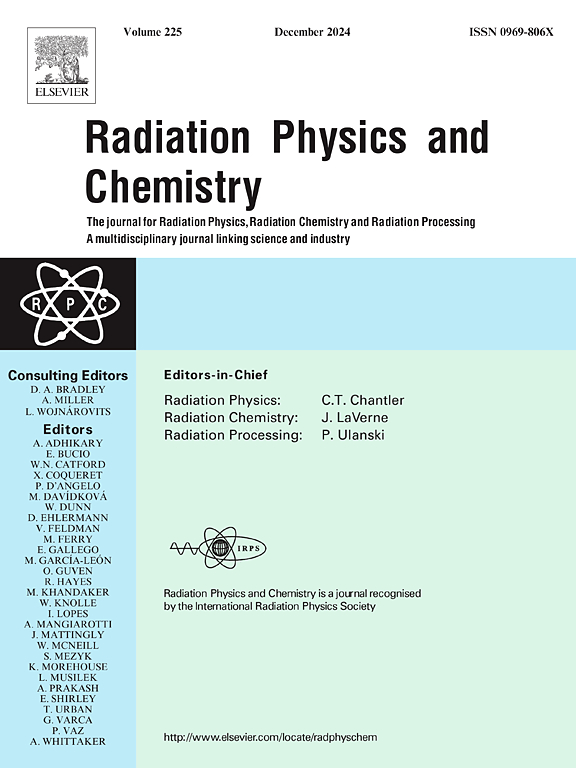Fabrication of low-cost heterogeneous anthropomorphic thyroid neck phantom for CT
IF 2.8
3区 物理与天体物理
Q3 CHEMISTRY, PHYSICAL
引用次数: 0
Abstract
This article details the creation of a low-cost, heterogeneous anthropomorphic neck phantom with thyroid carcinoma for CT imaging. The phantom was designed to enable academic researchers and imaging system manufacturers to test and calibrate imaging machines and calculate dosimetry using thermoluminescent dosimeters in the neck and thyroid region. It was constructed using tissue-mimicking materials representing the thyroid, carcinoma, trachea, esophagus, spinal bones, muscle tissue, and adipose tissue. These materials were developed based on the elemental compositions outlined in the International Commission on Radiation Units and Measurements (ICRU) Report 44 and the International Commission on Radiological Protection Report 110 (ICRP).
The phantom was modeled and segmented from a CT scan of a 52-year-old female thyroid cancer patient using segmentation software. Segmented parts were 3D printed and molded with silicone caulking, followed by the fabrication of tissue-mimicking materials cast into a cylinder filled with muscle tissue material. Validation showed that the tissue-mimicking materials generally achieved appropriate ionizing radiation parameters, such as tissue density, electron density, and effective atomic number. However, notable discrepancies were observed in the densities of the muscle and spinal bone materials compared to reference values.
Mass attenuation coefficient (μ/ρ) graphs generated via the XCOM database showed minimal deviations from reference data provided by the ICRU and the ICRP. Validation under a standard thyroid imaging protocol on a CT machine demonstrated reasonable anatomical accuracy and Hounsfield unit ratios between tissues. However, challenges in achieving consistent material properties for muscle and spinal bone materials were identified, suggesting areas for future improvement.
求助全文
约1分钟内获得全文
求助全文
来源期刊

Radiation Physics and Chemistry
化学-核科学技术
CiteScore
5.60
自引率
17.20%
发文量
574
审稿时长
12 weeks
期刊介绍:
Radiation Physics and Chemistry is a multidisciplinary journal that provides a medium for publication of substantial and original papers, reviews, and short communications which focus on research and developments involving ionizing radiation in radiation physics, radiation chemistry and radiation processing.
The journal aims to publish papers with significance to an international audience, containing substantial novelty and scientific impact. The Editors reserve the rights to reject, with or without external review, papers that do not meet these criteria. This could include papers that are very similar to previous publications, only with changed target substrates, employed materials, analyzed sites and experimental methods, report results without presenting new insights and/or hypothesis testing, or do not focus on the radiation effects.
 求助内容:
求助内容: 应助结果提醒方式:
应助结果提醒方式:


